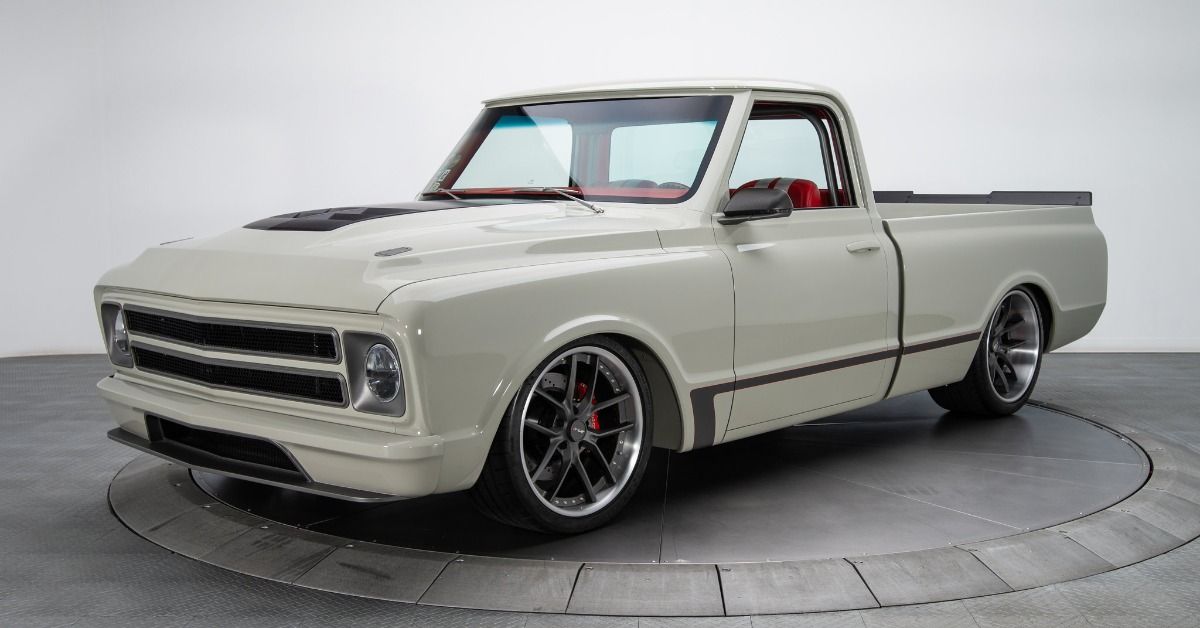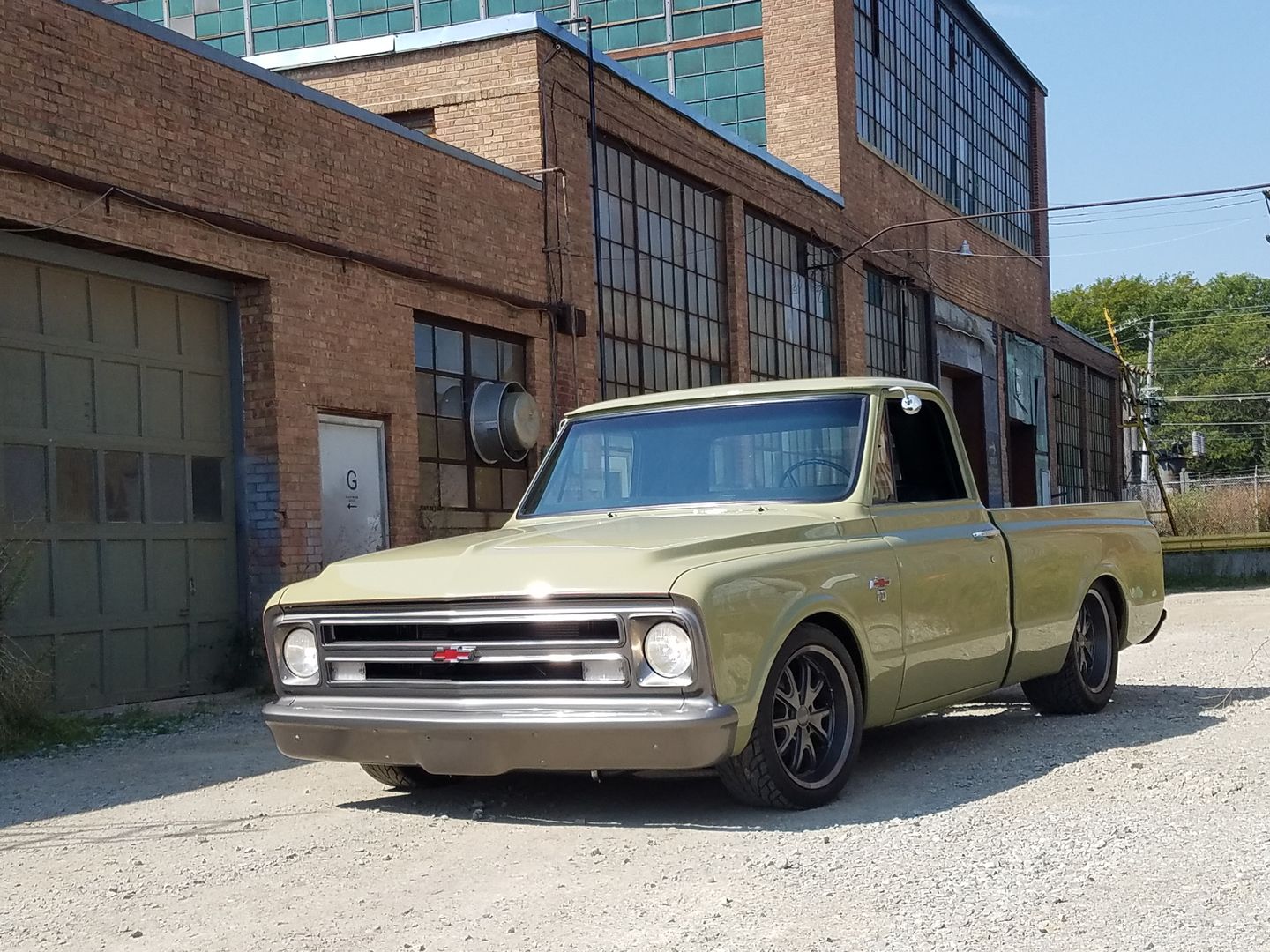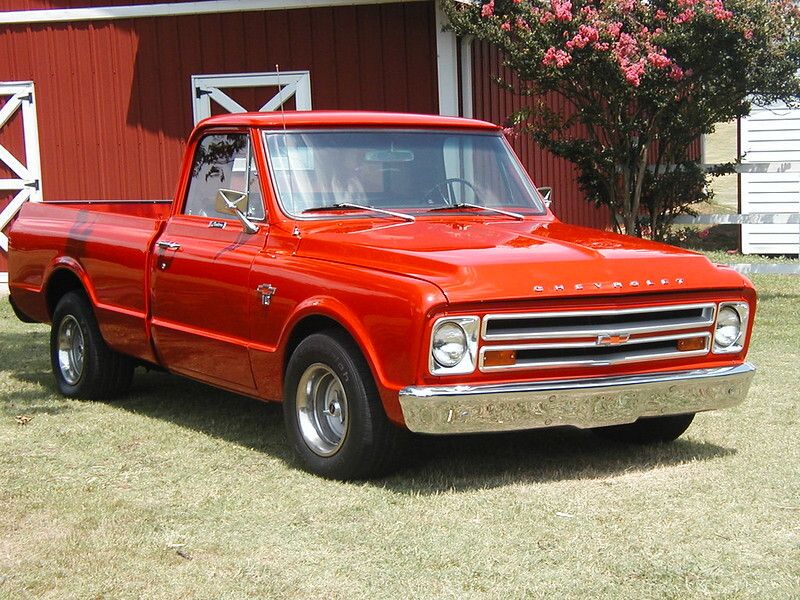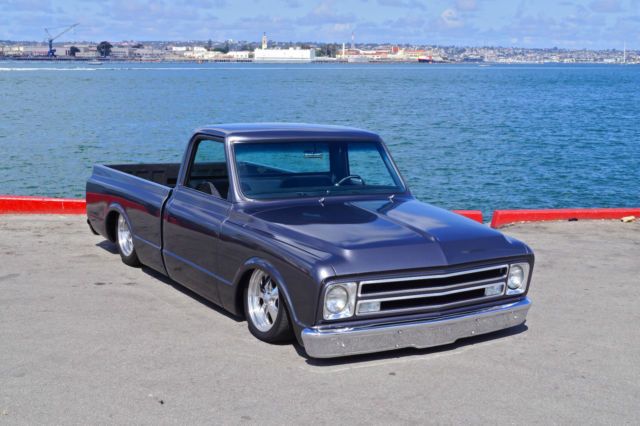Back in the '50s, the truck market was not nearly as well-rounded as it is today. Chevrolet and Dodge were living off the scraps that the Ford F-Series was leaving behind, as the blue oval dominated the pickup segment with its second and third generation series of ½, ¾, and one-ton pickups. By the time 1960 rolled around, consumers were more interested in a dual-purpose truck than just a steel workhouse.
The recession of 1960 only furthered exacerbated people’s need for an everyday-capable truck, as the idea of two cars serving separate purposes were nothing more than illusions of grandeur. Enter the Chevrolet C/K Series. The C-series representing two-wheel drive formats, and the K-series handling the four-wheel drive layout.
It wouldn’t be until the second generation of the C/K series before Chevrolet struck gold. In what could possibly be considered the first time a truck was considered dual-purpose, the 1967 Chevrolet C10 saw many comforts afforded that most muscle cars of the same era couldn’t even fathom. Automatic transmissions, radios, carpet... in a truck! It was the beginning of the end for the truck as a work vehicle, and the beginning of what would become a generation of low and slow cruising trucks.
Seeing how the ’67 C10 was largely responsible for the evolution of pickup trucks as we know it, it’s not shocking to see the values skyrocket into new-car-pricing territory. This is what the 1967 Chevrolet C10 is worth in today’s market.
What Made The C10 So Special?
Dubbed the “Action Line,” the second-generation C/K underwent a ground-up restoration to adapt the truck for multipurpose use. Improved durability and increased functionality were met with added convenience features in order to prove its effectiveness in being a personal-use vehicle.
The C/K platform gave way to GM’s lineup expansion that saw the arrival of the Suburban (Carryall) utility wagon, joined by the K5 Blazer, which would receive a shorter wheelbase version that would ultimately serve as the prototype for off-road, sport utility vehicles, what we now know as the SUV. In addition to expanding the car segment, the C/K series saw the arrival of the Cheyenne and Sierra trims, levels that are still used in today’s GM trucks.
As for the 1967 C10 in particular, its saw the arrival of new body sheet metal as an added defense against rust, as well as a double-walled steel bed for a major increase in payload durability. The C-series was also developed with independent coil spring trailing arm suspension for an upgraded ride quality.
The second-generation would serve as the basis for the eventual third-generation, that would see the C/K series moniker last until 2000 when it was replaced by the now iconic, Silverado, which was elevated from a top-tier trim level, to entire class of Chevy trucks.
The Chevrolet C10: By The Numbers
With the comfort side of the C/K Series seeing a dramatic improvement, the capability side continued to be the workhouse that manual-labor truck owners came to know and love. To satisfy a wide and very specific range of power, Chevy and GMC offered a handful of inline-six engines, alongside a couple V8 options that are as follows:
-
250 cu in (4.1L) straight-6
- 155 HP at 4200 RPM, 235 lb-ft at 1600 RPM
-
283 cu in (4.6L) V8 small-block
- 175 HP at 4400 RPM, 275 lb-ft at 2400 RPM
-
292 cu in (5.0L) straight-6
- 170 HP at 4000 RPM, 275 lb-ft at 1600 RPM
-
305 cu in (5.0L) V6
- 165 HP at 3600 RPM, 280 lb-ft at 1600 RPM
-
327 cu in (5.4L) V8 small-block
- 220 HP at 4400 RPM, 320 lb-ft at 2800 RPM
-
351 cu in(5.8L) V6
- 180 HP at 3400 RPM, 155 lb-ft at 3400 RPM
Chevrolet also offered numerous transmission options that saw several manual transmissions including three different 4-speeds, as well as three different automatic transmissions such as a 2-speed powerglide, as well as the 350 and 400 versions of the 3-speed THM automatic.
Check Out This Incredible Lowrider C10 And Its Inspirational Backstory
Pricing And Availability
In 1967 alone, Chevrolet produced nearly 300,000 examples of the C10 across its range of beds, transmissions, and engine options. A truly astounding number when you remember that Porsche sold 300,000 vehicles as an entire brand all of 2021. But like most 50-year-old vehicles, numbers are seriously depreciated with what seems like no project builds left.
Coupled with a massive hyperinflation across all car markets, the C10 certainly has appeared to reach its ceiling after its extremely humble MSRP of $2,221 (about $17,000 in today’s buying power), in 1967. Low-end examples on the likes of craigslist and offerup bottom out around $11,000, whereas top-of-the-line restomods, with high-end motor swaps and interiors can fetch as high as $120,000 from classic car auction houses and dealerships.
Two years ago, the NADA guides were extremely valuable to a buyer’s negotiation process, however, with the market in a free fall, C10’s are worth what someone is willing to pay. But if you are a top-notch negotiator, the NADA and Bring A Trailer’s values can be quite helpful. With a range from about $20,000-$78,000 for NADA, BAT sees more than a handful of sales hover around the $30,000-$60,000 mark.
With modern trucks capable of two and three times as much power, torque, towing, and payload capabilities, the idea of a 50-year-old, $40,000 pickup truck is sure to raise some eyebrows. However, it would be the perfect alternative for customers spending six-figures on a modern truck that will never see a day of work in its life. Because at the end of the day, with current trucks capable of handling twice the workload with half the effort, they’ll still never look quite as good as a mint, 1967 Chevrolet C10 does.




